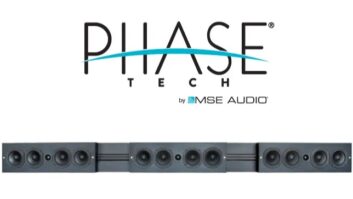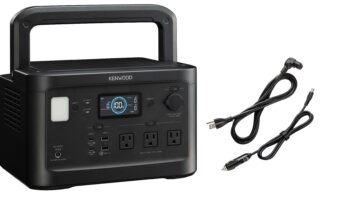Offering significantly reduced price points that have spurred increased consumer awareness of the affordability of flat-panel TVs, retailers and vendors are expecting a strong holiday selling season for the category.
Plasma TVs continue to grow behind new low pricing on 42W-inch and 50W-inch models. The activity has caused a number of manufacturers to drop or scale back EDTV models that once dominated consumer sales in favor of HDTV-level models.
Meanwhile, LCD TVs have also seen dramatic price declines spurred by the entry of new Asian brands looking to build brand awareness through aggressive pricing. In addition, as panel manufacturers add new LCD production lines, both the unit volume and screen sizes have increased.
Scott Ramirez, Toshiba’s marketing VP, reports, “Industry LCD and plasma sales in the past three months are up almost 130 percent, although Toshiba’s growth rates are far above that. At this point, it looks like demand will remain at least this strong for the next quarter.”
Bruce Tripido, Sharp display devices product marketing director, says flat-panel sales for the fourth quarter are estimated to be between 1.7 and 2 million units for the industry.
“Both demand as well as sales continue to be strong. These sales levels are expected to bring the calendar year sales to a level of between 4 and 4.2 million vs. the 1.8 million we collectively sold as an industry last year,” he says.
According to an iSuppli market forecast for 2005 flat-panel TV sales issued in September, the industry should see sales of 1.58 million plasma TV units, up 110 percent from 2004 levels. Full-year LCD-TV sales are expected to reach 5.63 million units, up 104 percent over 2004 levels, iSuppli predicts.
Andrew Nelkin, Panasonic’s display group VP, says, “We are just at the beginning of the growth curve for the plasma TV category. I think that customers are just starting to realize how good the product can be and they have responded with huge increases that will continue through the fourth quarter.”
According to Nelkin, industry inventory levels for plasma “are a little light, but that’s good. The demand for 50W-inch models is higher than expected, and in the short-term that screen size will be the most constrained.”
In LCD TV, Toshiba’s Ramirez says industry inventory levels for 32W-inch models may run thin as the holidays draw nearer.
In plasma, 42W-inch models are expected to see continued strength, but the 50W-inch segment will see major growth as flat-panel shoppers spot new low price points and step-up to the largest screen sizes they can afford, vendors and retailers say.
“A year ago at this time a 50W-inch plasma TV was $7,000 and today it’s $3,999. That puts it in the realm of mainstream pricing,” says Dan Schuh, who oversees video merchandising for the Pontiac, Mich. retailer ABC Warehouse.
Schuh says while new Asian flat-panel TV brands are leading the trend to cut pricing, the “Tier One” brands are seeing the most significant growth.
“In LCD we are seeing significant overall increases in branded product,” Schuh says, echoing the observations of tier one brand marketing executives.
Average retail pricing on 42W-inch plasma models have fallen below $2,000 on certain models, and 50W-inch models are following close behind, with some new players offering entry retails close to $3,000.
Market analysis firm Quixel Research reports that high-definition plasma TVs matched EDTV level models in both units and revenue during the second quarter of 2005.
“Where in past quarters 42W-inch enhanced-definition plasma TVs have accounted for up to 64 percent of the category in units, second-quarter results show 50 percent of the plasma TVs sold were high definition,” says Tamaryn Pratt, Quixel’s principal. “In Q2, the average selling price for a 42W-inch HD plasma TV plummeted 18 percent from Q1 2005.”
One of the hotter screen sizes in LCD TV this holiday season will be 32W-inch HD models, which will see entry street retails of around $1,499 for some first-tier brands and under $1,000 for more aggressive Asian start-up brands selling monitor configurations, some manufacturers predict.
Quixel says that unit sales of LCD TVs with widescreen aspect ratios topped models with 4:3 screen sizes in the second quarter of 2005.
“A huge increase in sales of 23W-inch and 26W-inch LCD TVs fueled the 16:9 segment,” says Pratt. “For consumers these are the screen sizes where it starts to make sense to buy a 16:9 LCD TV; plus the fact that they can now buy one for under $1,000.”
Quixel says overall LCD-TV revenues were up almost 30 percent and unit sales up almost 40 percent in the second quarter of 2005. The U.S. LCD-TV category topped $963M in the second quarter, which was a 127 percent year-to-year increase over Q2 2004. While the 15-inch screen size segment only contributed $62M of the second quarter’s revenues, this segment still contributed the largest unit volume overall.













